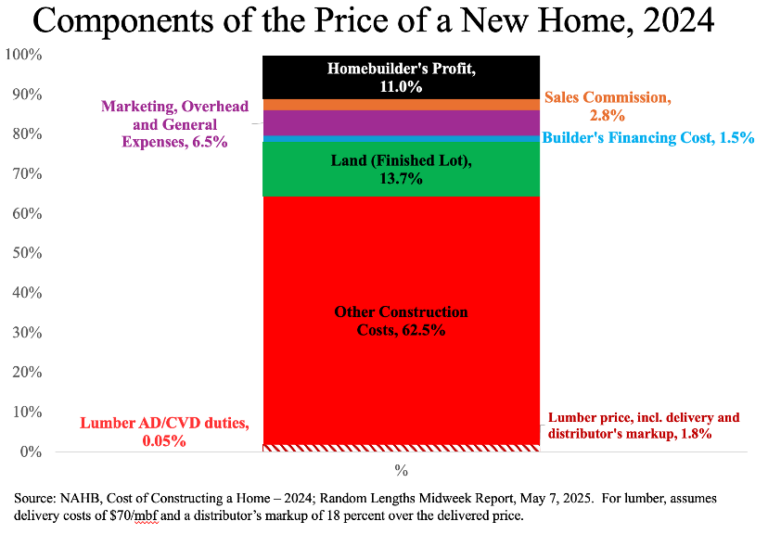The Trump Administration is placing tariffs on Canadian softwoods exported into the U.S., and that means that the cost to construct new homes will increase, making homes already deemed too expensive for many even more unaffordable. At least that is the case for some groups, such as the National Association of Home Builders (NAHB).
For years, NAHB has been leading the fight against tariffs because of what it calls a “detrimental effect on housing affordability.” In effect, the tariffs act as a “tax on American builders, home buyers and consumers.”
According to the NAHB, the cost of building materials had risen by 34% since December 2020, which they said was far higher than the rate of inflation. Data from the NAHB/Wells Fargo Housing Market Index (HMI) April 2025 survey reveals that builders estimate a typical cost effect from recent tariff actions at $10,900 per home.
But, arguing against that idea is the U.S. Lumber Coalition, which believes that lumber accounts for a small share of the sales price of a newly constructed homes, and that U.S. producers are ready to offset any lumber imported from Canada.
According to a May 2025 coalition press release, while lumber is a small share of house’s cost, in general, lumber has made an even smaller contribution to the increase in house prices that has occurred in recent years. From 2015 to 2024, the average sales price of a new home increased by $157,214 while the cost of the lumber in a typical home increased by $901 per house. Thus, the increase in lumber prices was the equivalent of 0.57 percent of the increase in U.S. home prices over the past decade.

“Increased U.S. capacity through the enforcement of the U.S. trade laws means that today the United States can supply the vast majority of its own lumber needs,” said Zoltan van Heyningen, U.S. Lumber Coalition Executive Director.
U.S. mills have added 8.8 billion board feet of capacity since 2016 in the form of new mills and expansions of existing mills. The U.S. industry has produced 30 billion additional board feet of softwood lumber during this period. These increases have more than offset any decline in unfairly traded Canadian imports and are enough lumber to build two million single-family homes.
“The United States has the natural resources to support its lumber industry. The American lumber industry and forestry sector today has the capacity to supply nearly all U.S. lumber demand, and with continued strong trade law enforcement can become self-reliant over time,” concluded van Heyningen.

